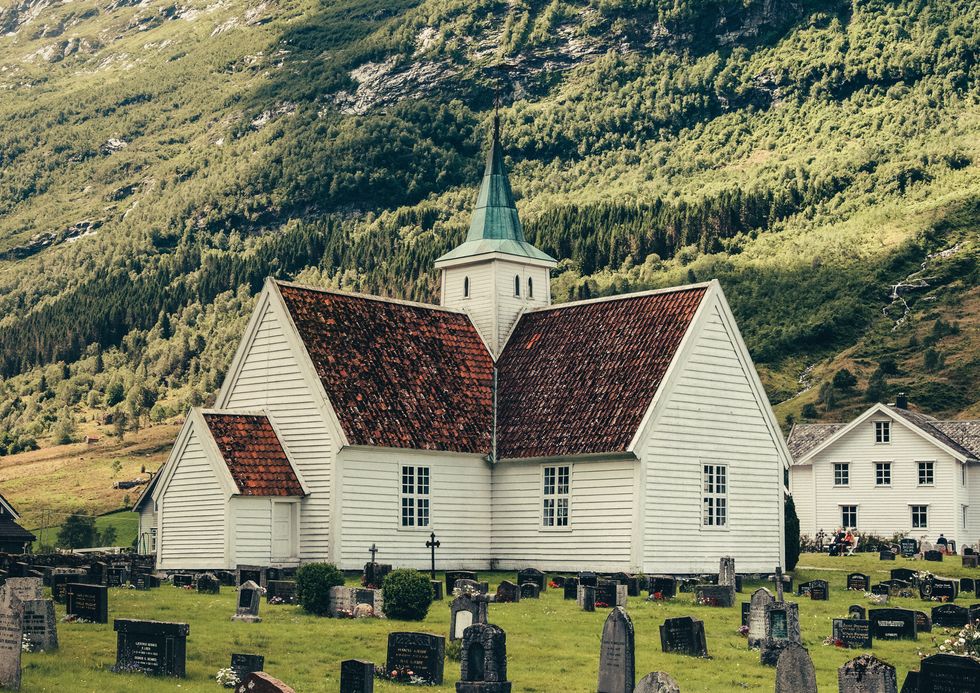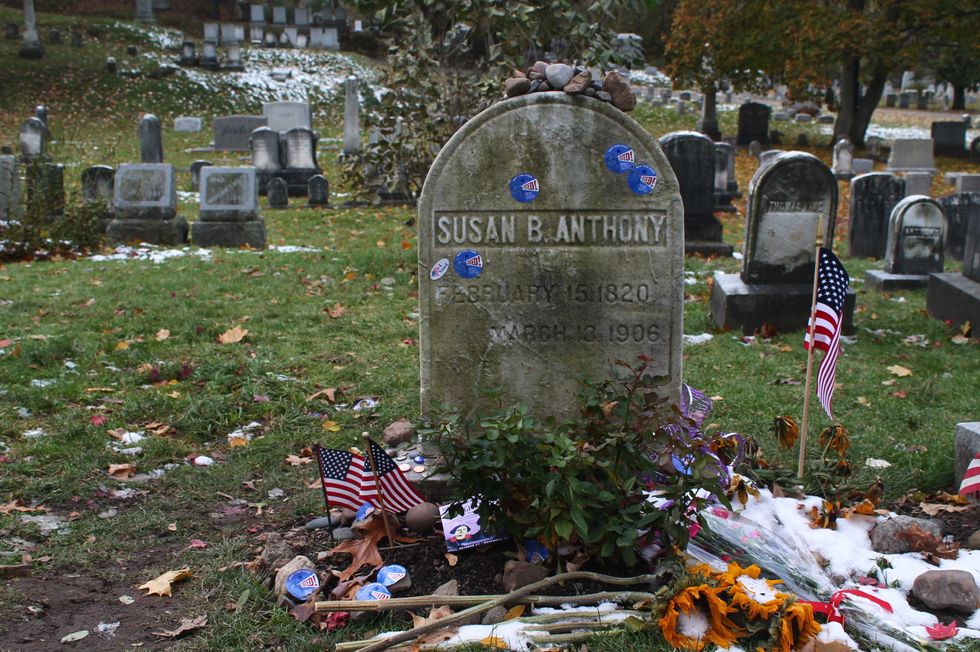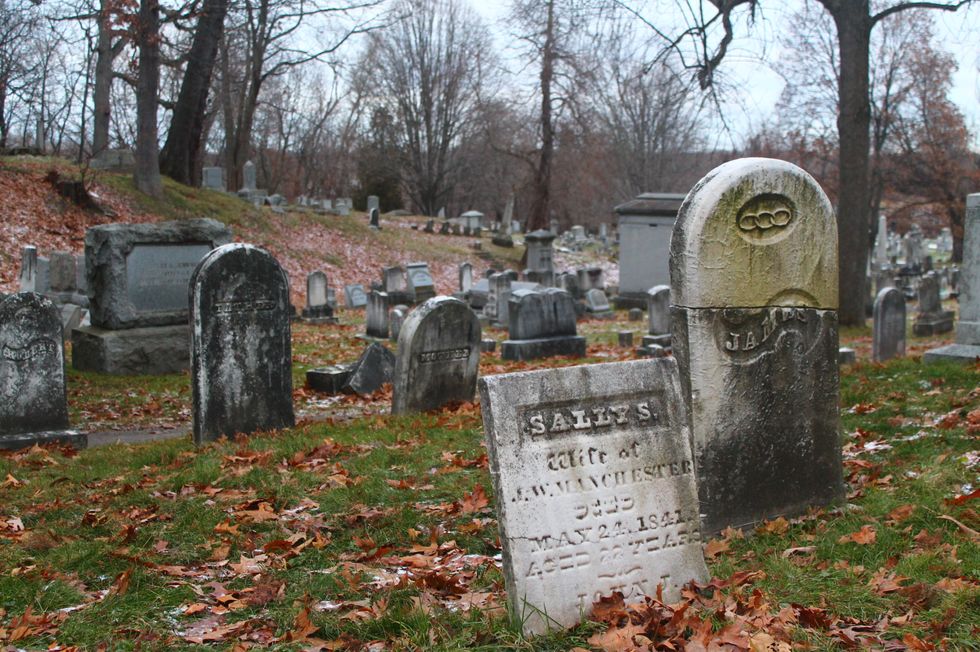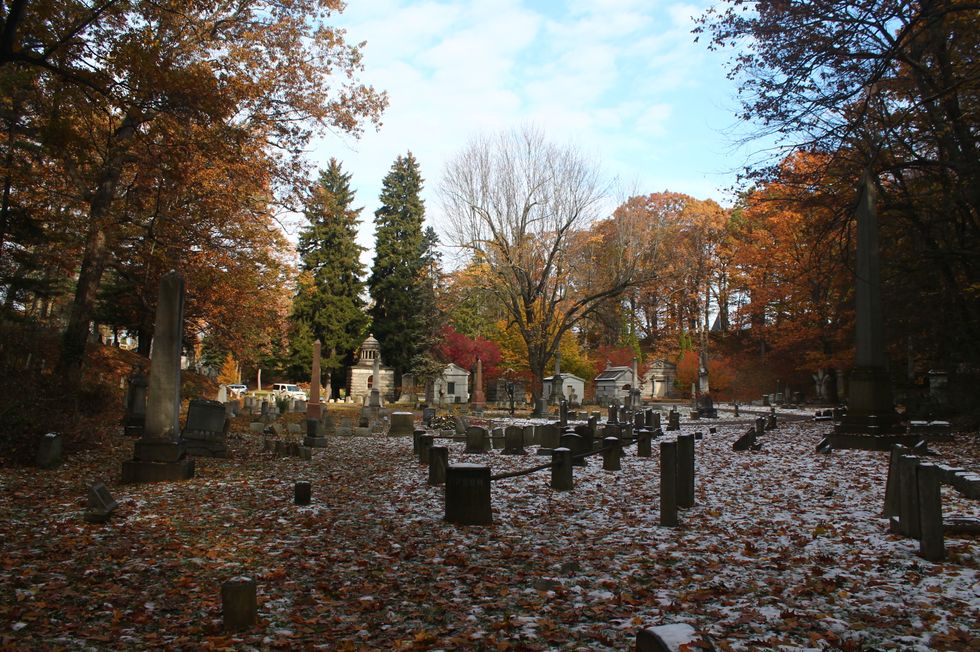On a cold day in mid-December, shortly after finishing my last final exam for the fall semester, I got the sudden, overwhelming urge to go and visit a cemetery. Not at all an unusual desire for me to experience, I drove home and collected the rest of my family for a snowy cemetery adventure. Strange as it may sound, my family and I are frequent cemetery goers. I’ve easily visited over a dozen different cemeteries in my life and frequently return to my favorites—within the past month alone I’ve visited cemeteries half a dozen times.
My hobby is neither as morbid nor as unusual as it sounds. There is a large community of avid cemetery goers—some of whom refer to themselves as “gravers”—who enjoy visiting cemeteries for a variety of reasons. Most self-proclaimed gravers photograph graves and record inscriptions on tombstones in order to help catalog burial locations in cemeteries for websites like FindAGrave. However, not everyone who visits a cemetery does so in order to gather records and help build digital databases of cemeteries. Whether you’re on the hunt for a specific grave, or just looking for something to do on a nice day, there are a lot of reasons that you should visit a cemetery.
Visiting a cemetery is like taking a trip through history. Depending on where you visit, you could have the chance to see the burial sites and memorials of famous historical figures, veterans of war, or even people that you knew. Mount Hope Cemetery in Rochester, NY, for example, is home to Susan B. Anthony, Frederick Douglas, and Buffalo Bill’s children.
Cemeteries are also a testament to what’s lasting in life. I cannot begin to count the number of completely eroded and illegible gravestones that I have seen. Digital databases are helpful for finding a certain stone, but when you’re in the middle of a cemetery surrounded by unreadable gravestones that you know are supposed to be memorials for people who have passed on, you gain a new perspective on what matters.
Chances are that in several hundred years gravestones that are being put in the ground right now won’t be very legible either, and only those who are famous or documented in a digital database and visited by family members will be remembered for who they were. Sure, you can sink a lot of money into a really nice gravestone (and I and other gravers will greatly enjoy it) or even a big mausoleum, but that memorial isn’t going to last forever.
It used to be commonplace for people to visit cemeteries for enjoyment on a day to day basis, whether it was to walk the grounds, read a book, or enjoy some peace and quiet—after all, the dead aren’t very rowdy. In the mid-1800s Mount Auburn Cemetery just outside of Boston, MA, put cemeteries on the map in terms of becoming tourist destinations. At one point, Mount Auburn was considered one of the most popular tourist destinations on the east coast. In an attempt to get in on the popularity of the reimagined cemetery with expansive green acres covered in gravestones and manicured landscaping, other cities started creating their own Auburn-esque cemeteries.
Visiting cemeteries may no longer be as popular as it once was in the late 19th and early 20th centuries, but that doesn’t mean you shouldn’t keep cemeteries on your list of places to go when good weather calls. Cemeteries offer a unique opportunity to confront mortality head on and reflect on what’s important in life. Next time you’re looking for some adventure, head to a cemetery, the dead don’t bite—not in my experience, anyway.





















